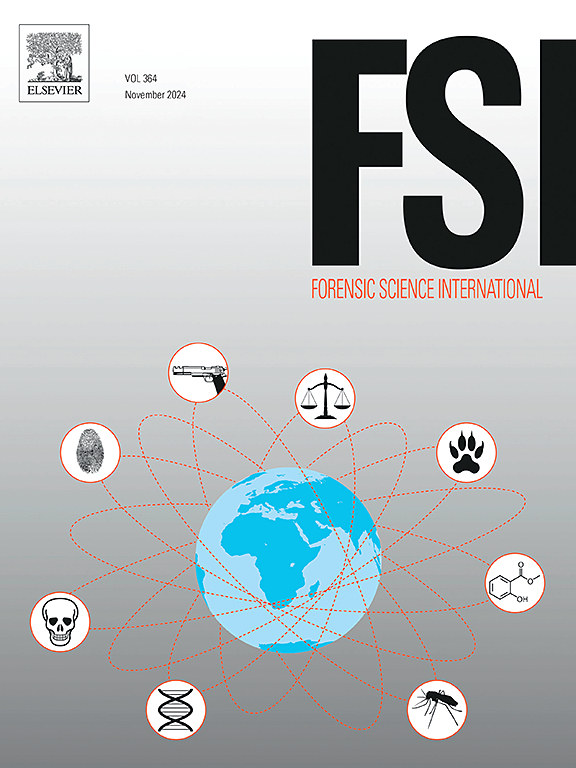Homogeneity of automotive paint system: Evaluation of chemical variability and degradation
IF 2.5
3区 医学
Q1 MEDICINE, LEGAL
引用次数: 0
Abstract
Automotive paint traces are common due to their ease of transfer during collisions between vehicles. These traces are frequently found in hit-and-run cases, and the use of databases can provide a list of potential makes, models, and years of production. It is well known that automotive paintwork is not homogeneous and can sometimes show variations in the number of layers (repairs, repaints), thickness and composition. Degradation due to external environmental conditions can also introduce differences in homogeneity within a vehicle. While it is generally known that a paint comparison sample should be taken in an area close to the damaged area, due to the heterogeneity of the paint application, the homogeneity of automotive paint over the entire body of a car is a subject that has received little attention in the literature. Therefore, the homogeneity of the paint system of eight vehicles was evaluated using microscopic examinations, spectroscopic analysis (infrared and Raman) and principal component analysis (PCA). Variability in the number and thickness of paint layers is observed in all of the different vehicles sampled. PCA of Raman and FTIR spectra reveals the presence of discrimination according to location, degradation and aftermarket refinishes. Degradation is evaluated by calculating the photo-oxidation index (POI). The results provide additional information when comparing references and paint traces taken from real cases and help to understand possible differences depending on the sampling location.
汽车涂料体系的均匀性:化学变异性和降解的评价
汽车油漆痕迹很常见,因为它们在车辆之间的碰撞中容易转移。这些痕迹经常出现在肇事逃逸的案例中,数据库的使用可以提供潜在品牌、型号和生产年份的列表。众所周知,汽车漆面不是均匀的,有时会在层数(修理,重漆),厚度和成分上表现出变化。由于外部环境条件的退化也会导致车辆内部均匀性的差异。虽然众所周知,油漆比较样本应该在靠近受损区域的区域进行,但由于油漆应用的异质性,汽车油漆在整个车身上的均匀性是一个在文献中很少受到关注的主题。因此,采用显微检查,光谱分析(红外和拉曼)和主成分分析(PCA)来评估八辆车的油漆系统的均匀性。在所有取样的不同车辆中,观察到油漆层的数量和厚度的变化。拉曼光谱和傅里叶变换红外光谱的主成分分析显示,根据位置、降解和售后抛光存在歧视。通过计算光氧化指数(POI)来评价降解情况。当比较参考和从真实案例中获取的油漆痕迹时,结果提供了额外的信息,并有助于理解取决于采样位置的可能差异。
本文章由计算机程序翻译,如有差异,请以英文原文为准。
求助全文
约1分钟内获得全文
求助全文
来源期刊

Forensic science international
医学-医学:法
CiteScore
5.00
自引率
9.10%
发文量
285
审稿时长
49 days
期刊介绍:
Forensic Science International is the flagship journal in the prestigious Forensic Science International family, publishing the most innovative, cutting-edge, and influential contributions across the forensic sciences. Fields include: forensic pathology and histochemistry, chemistry, biochemistry and toxicology, biology, serology, odontology, psychiatry, anthropology, digital forensics, the physical sciences, firearms, and document examination, as well as investigations of value to public health in its broadest sense, and the important marginal area where science and medicine interact with the law.
The journal publishes:
Case Reports
Commentaries
Letters to the Editor
Original Research Papers (Regular Papers)
Rapid Communications
Review Articles
Technical Notes.
 求助内容:
求助内容: 应助结果提醒方式:
应助结果提醒方式:


